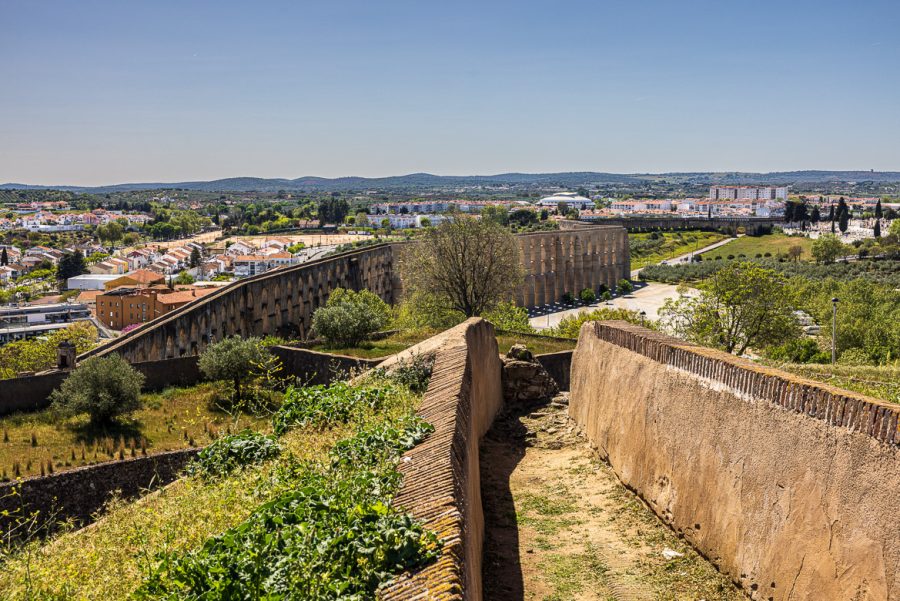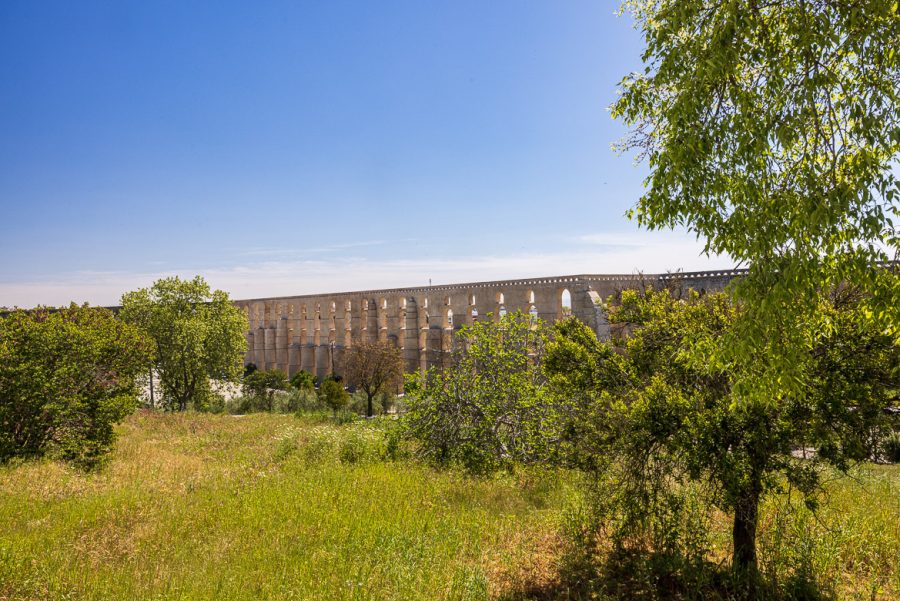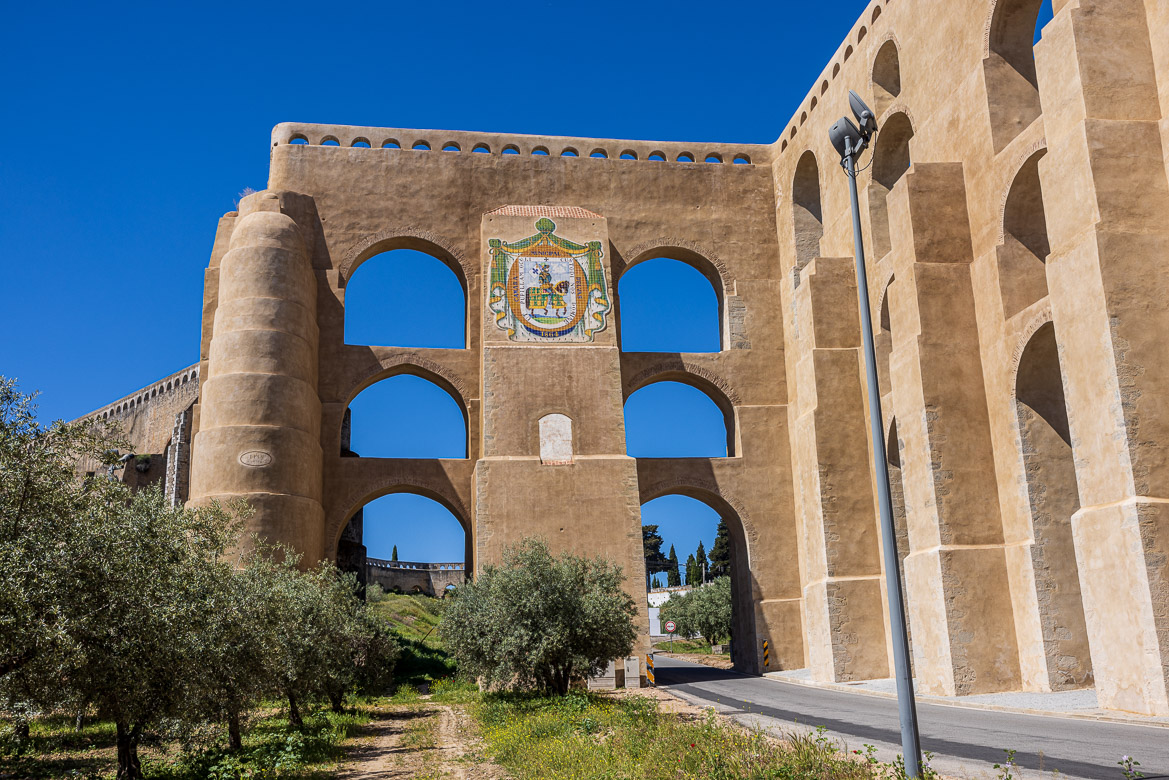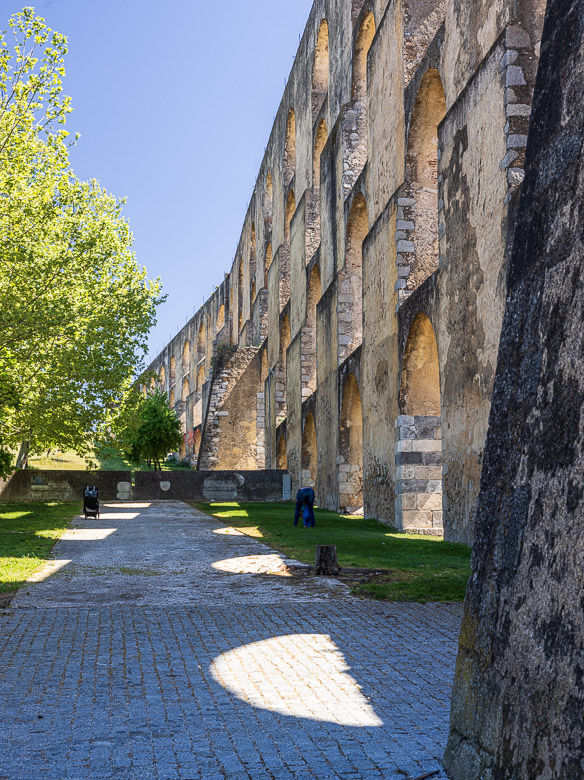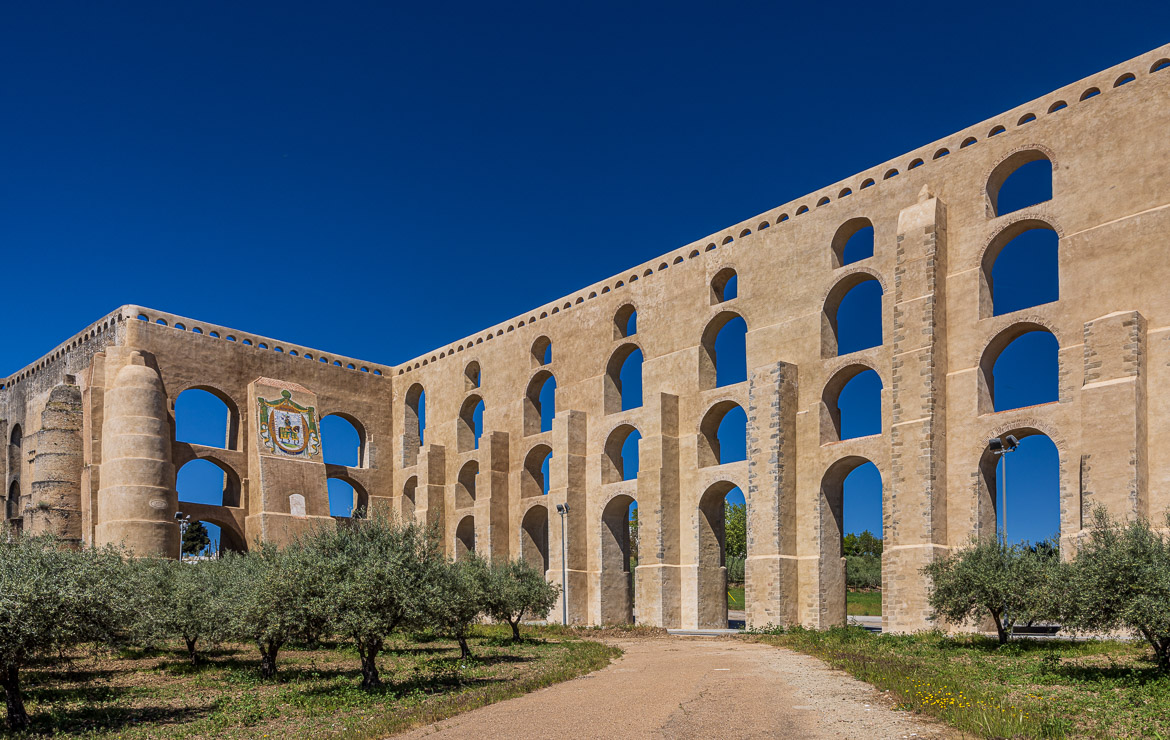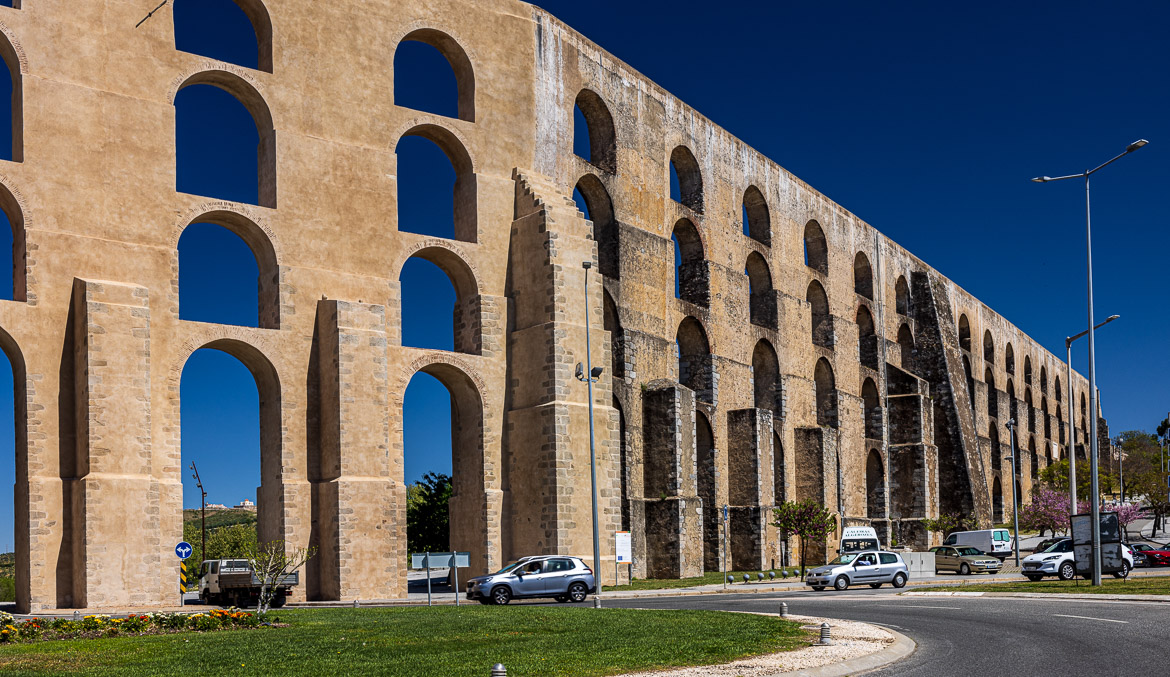
Elvas is quite a large city guarding the key border crossing between Portugal’s capital, Lisbon, and Spain’s, Madrid. The town was founded by the Romans and as all of south Portugal, it was occupied by the Moors and liberated from them in 1230. It had a great strategic importance during the wars of independence in the 16th C and it was extensively fortified from the 17th to 19th centuries. Most of these fortifications remain today and the whole town is surrounded by defensive walls.
But the real wonder of Elvas (at least in my opinion) is not the castles or ramparts but an aqueduct that brings water to the town. Construction began in 1537 but the water didn’t finally flow until 1620. It was designed by Francisco de Arruda, who also built the Blem Tower in Lisbon. It is 8 km long and consist of 843 arches. It is since 1910 classified as a World Heritage Site. I hope my photos, where in the first one you can see cars driving underneath the aqueduct, illustrate the enormous size of this monument.
The water comes from the region of Amoreira and ends up in a marble fountain inside the walls of Elvas.
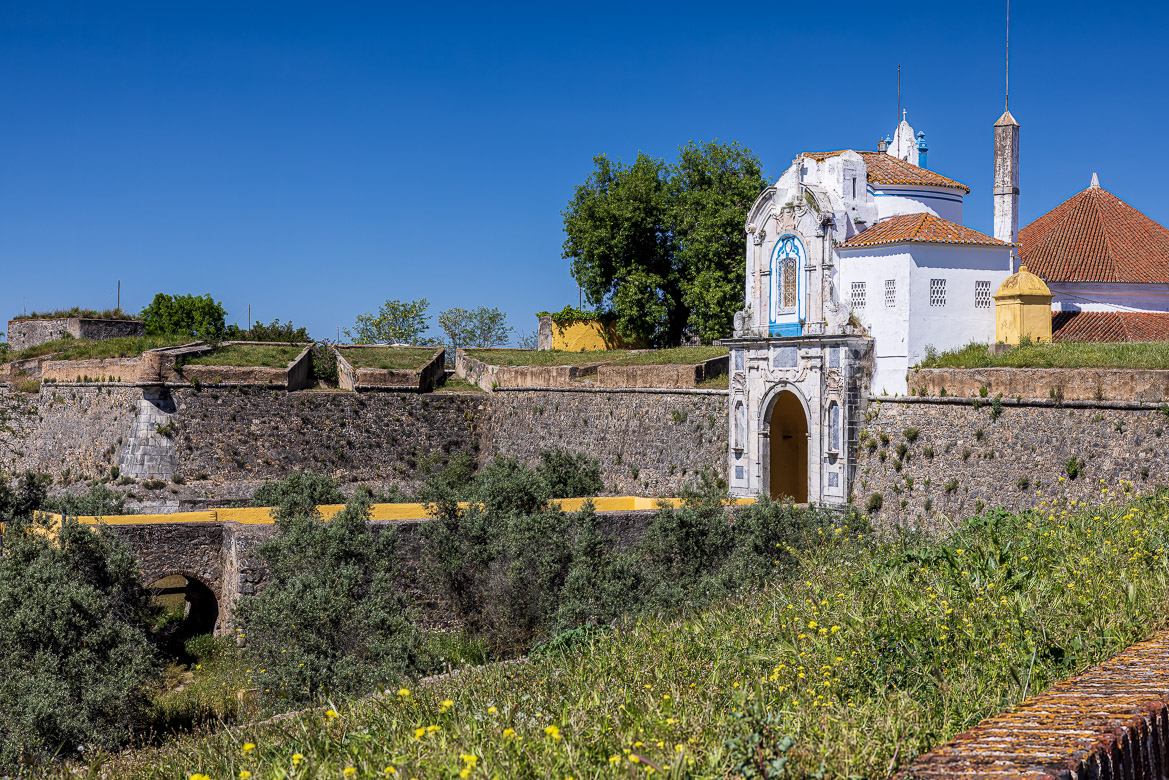
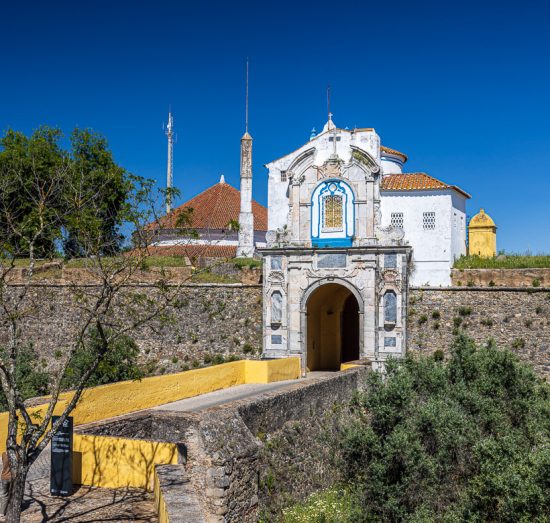
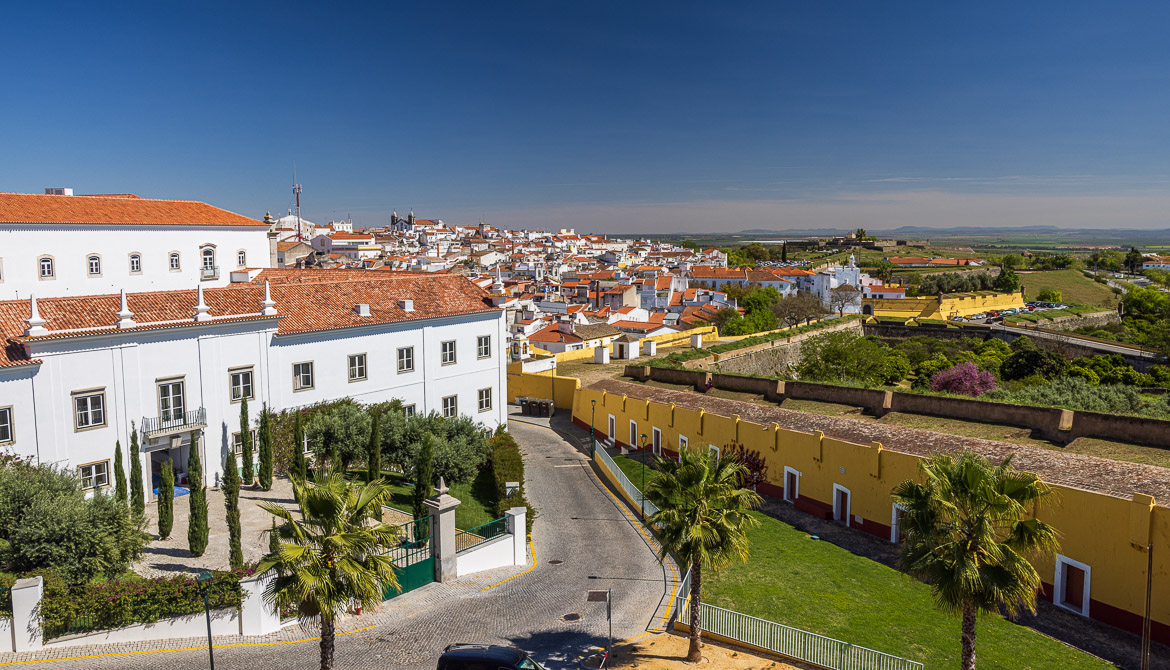
The images below illustrate the aqueduct. The first image is captured from the fortifications of Elvas. I am higher up than the aqueduct, so you can actually see the canal at the top of the aqueduct, built to transport the water. The second image shows the aqueduct from outside the town.
